Pickled Turnips
This post may contain affiliate links. See my disclosure policy.
Pickling is a method of preservation that dates back to Neolithic times around 7000 BC. During this anaerobic fermentation process strange and wonderful things happen that transform the original product into something quite different. And very healthy with all those probiotics.
So why not turnips? Yes, turnips. Pickled. Excited yet?
If you’ve never tried them you really should give them a go. They’ve been a staple food in the Middle East forever, particularly in Lebanon, Egypt and Syria, accompanying a whole array of dishes from breakfast to dinner. Pickled turnips are one of those simple, humble ingredients that can boost the flavor of certain dishes up by several notches. Or they can enhance the experience of a meal by serving them as a table condiment and popping them into your mouth between bites.
Try setting them out in a bowl on the dinner table like you would a bowl of pickles, peppers or olives and see what happens.
And they’re an especially great side to serve with Middle Eastern dishes like baba ganoush, hummus, flatbread, in falafels and in shawarmas.
I grew a bunch of turnips for the first time this year and am impressed by how easy and fuss-free they are to grow. They pretty much just do their own thing, even in the midst of competing weeds, and produce a beautiful crop.
With such a generous crop of turnips I’ve been experimenting more with these normally neglected root vegetables and have come to appreciate them quite a lot. Their mild flavor and pleasant crunch lend themselves perfectly to salads and I’ve been making a variety of oil and vinegar salads with them as well as adding them to other salads.
They’re also terrific baked or roasted alongside chicken. And have you ever had them pureed like mashed potatoes? They’re great!
But I still had a lot of turnips leftover and wanted to make good use of them and find a way to store them up for the Winter. What immediately came to mind was pickled turnips like the kind I was introduced to when I was doing a study abroad in Israel and frequently enjoyed when devouring shawarmas at Middle Eastern restaurants in Europe.
Incredibly simple to make, pickled turnips are an unexpectedly delicious way to put this root vegetable to use!
Let’s get started!
First we’re going to make the bring and all you have to do is add all the brine ingredients to a medium stock pot and bring it to a boil. Reduce the heat to medium, cover and simmer for 10 minutes. Let it cool completely.
Peel the turnips and cut them into spears or slices, whichever you prefer.
Slice up a a large beet or two small beets. Beets are traditionally used for pickled turnips, they make them visually more appealing. Over time the color becomes a vibrant neon pink.
Pack the turnips and a few slices of beet along with a clove of garlic into sterilized glass jars.
Pour the brine over them, covering them completely and leaving 1/2 inch headspace from the top of the jar.
Screw on the lids. Let the pickled turnips sit in a relatively cool place for a week to enable to fermentation process. Then store them in the refrigerator and ideally eat them within two months. Using this method will result in a more interesting and complex flavor than canning them.
If you are canning them for long-term storage: Add the brine to the sterilized jars while it’s still hot, covering the turnips completely and leaving 1/2 inch headspace from the top of the jar, and screw on the lids. Process in a boiling water bath for 10 minutes then remove the jars and let them sit undisturbed for 24 hours before moving them. Store them in a cool, dark place for up to a year (for maximum flavor and texture use within 6 months).
Initially light pink, the color intensifies within a few days, as does the flavor, and within a couple of weeks they’re ready to eat.
Serve these pickled turnips in a bowl at the dinner table as you would regular pickles, peppers or olives. They’re an especially great side to serve with Middle Eastern dishes like baba ganoush, hummus, flatbread, in falafels and in shawarmas.
Save This Recipe
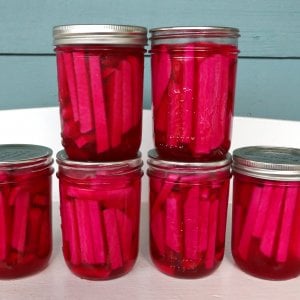
Pickled Turnips
Ingredients
- 3 pounds fresh, firm turnips , peeled and cut into about 1/3 inch sticks or slices
- 1 large red beet ,peeled and cut into about 1/3 inch sticks or slices
- A peeled garlic clove for each jar
- For the Brine:
- 3 bay leaves
- 1 tablespoon fennel seeds
- 1 tablespoon coriander seeds
- 2 cups white vinegar
- 3 cups water
- 1/2 cup kosher or sea salt (avoid regular table salt, it imparts a bitter flavor)
Instructions
- Place the brine ingredients in a small saucepan and bring to a boil. Reduce to medium, cover and simmer for 10 minutes. Let cool completely.
- Stuff the turnips into sterilized jars along with a few pieces of beet and a clove of garlic and add the brine, seeds and all, to fully cover the turnips and leaving 1/4 inch headspace from the rim of the jar. Screw on the lids. (*See note for instructions on canning the turnips.)
- Let the pickled turnips sit in a relatively cool place for a week to enable to fermentation process. Then store them in the refrigerator and ideally eat them within two months. Using this method will result in a more interesting and complex flavor than canning them.
- If you are canning them for long-term storage: Add the brine to the sterilized jars while it's still hot, covering the turnips completely and leaving 1/2 inch headspace from the top of the jar, and screw on the lids. Process in a boiling water bath for 10 minutes for pint sized jars then remove the jars and let them sit undisturbed for 24 hours before moving them. Store them in a cool, dark place for up to a year (for optimal flavor and texture, use within 6 months).
Nutrition

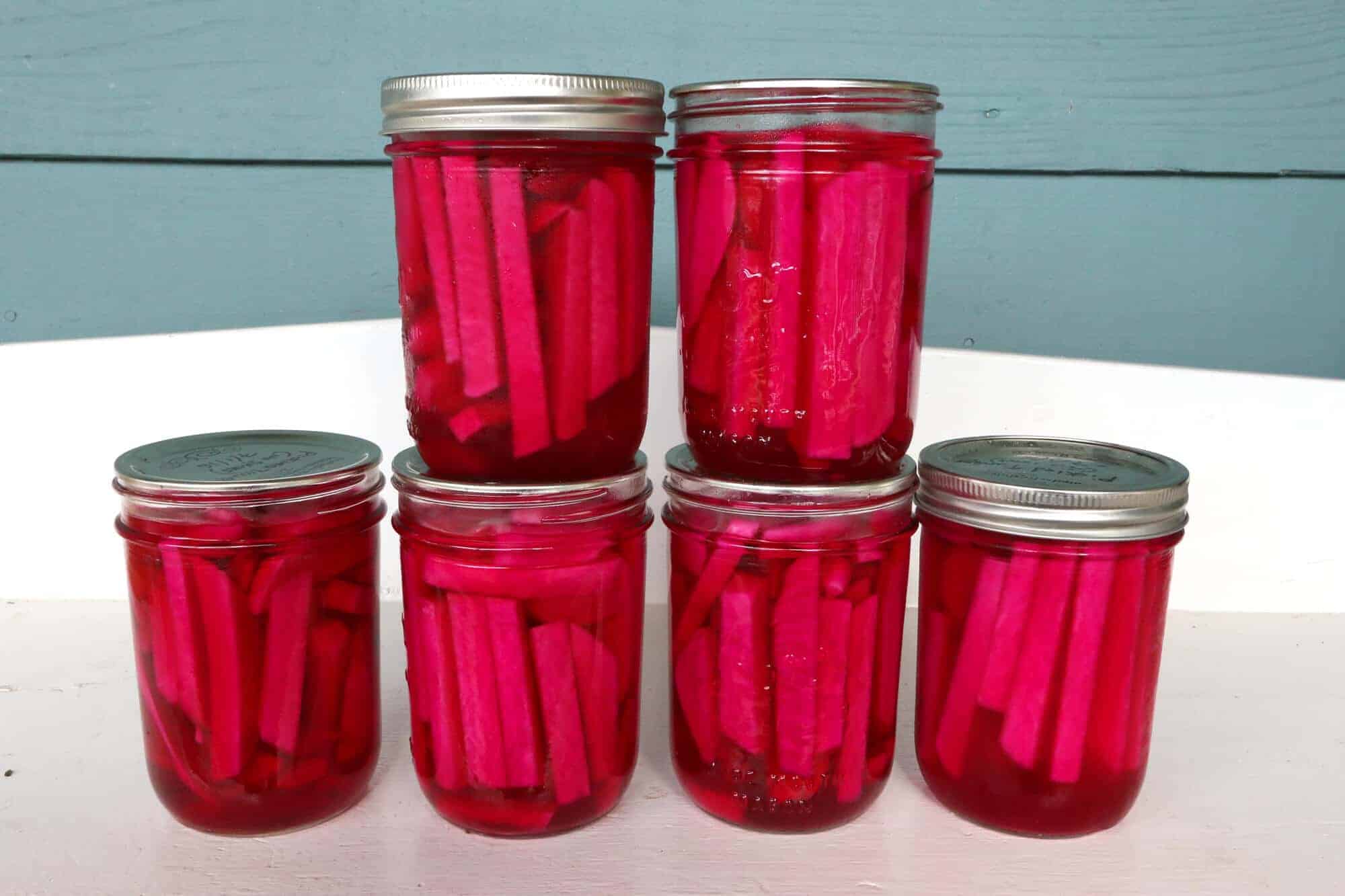
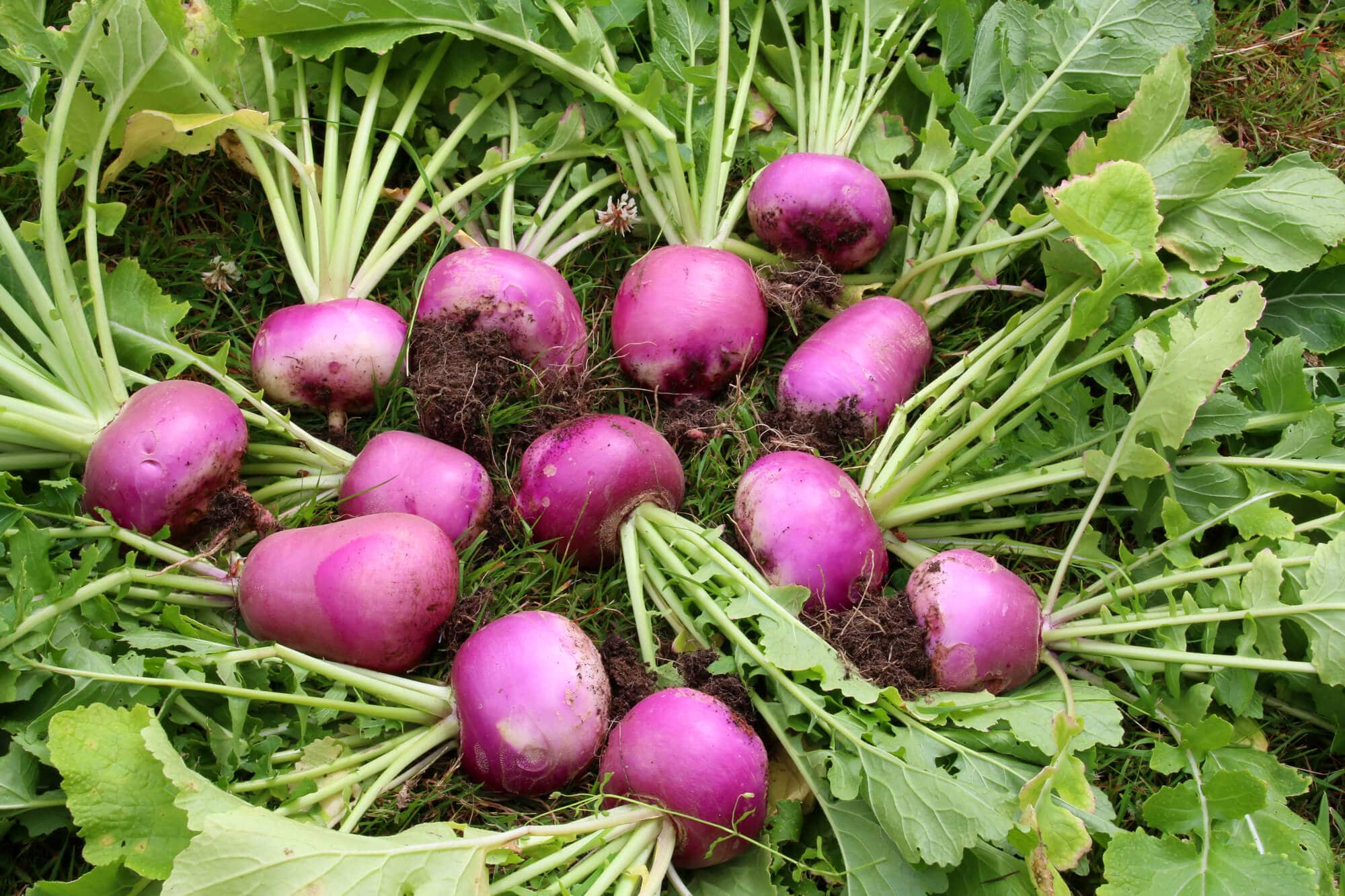
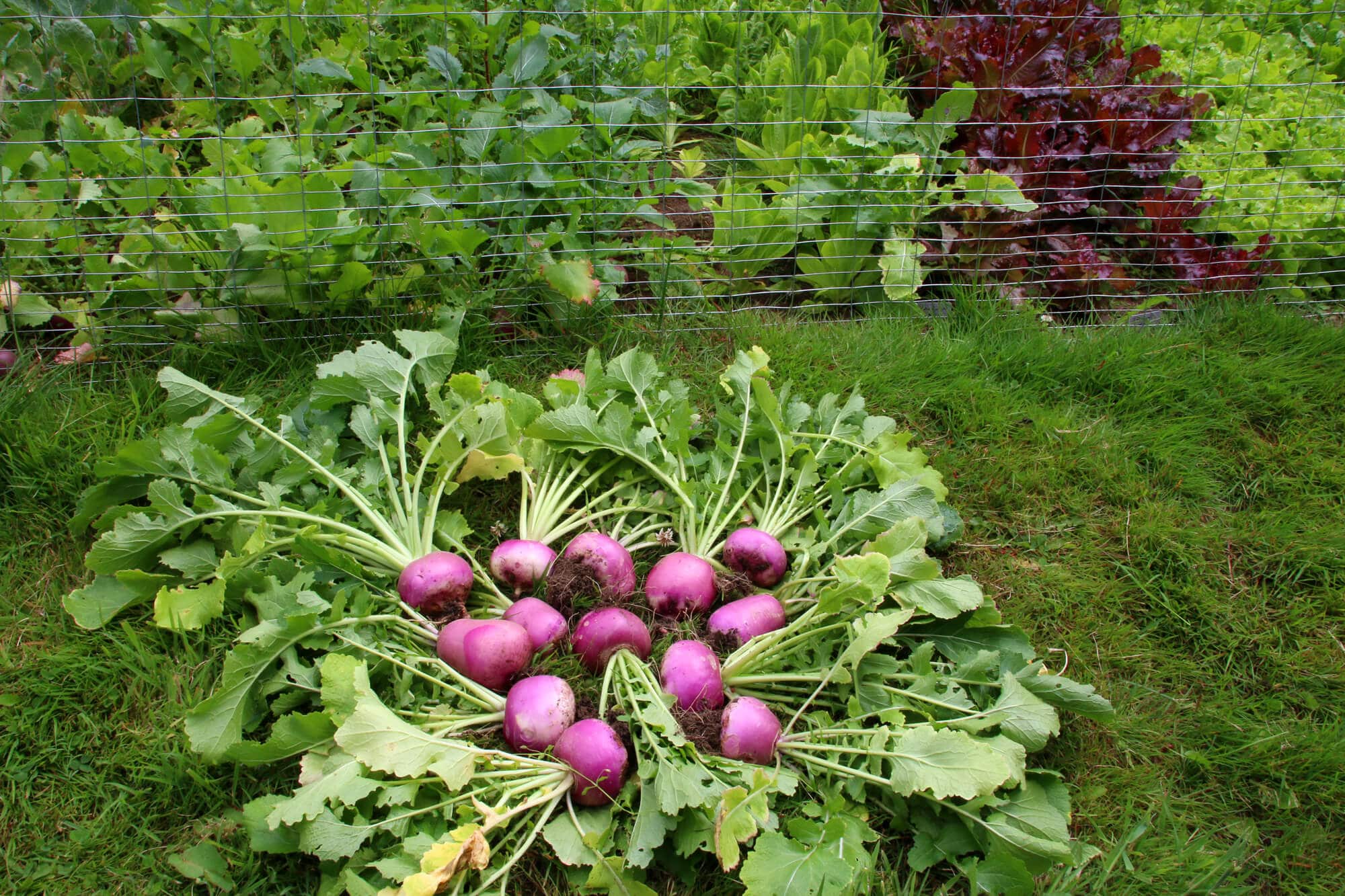
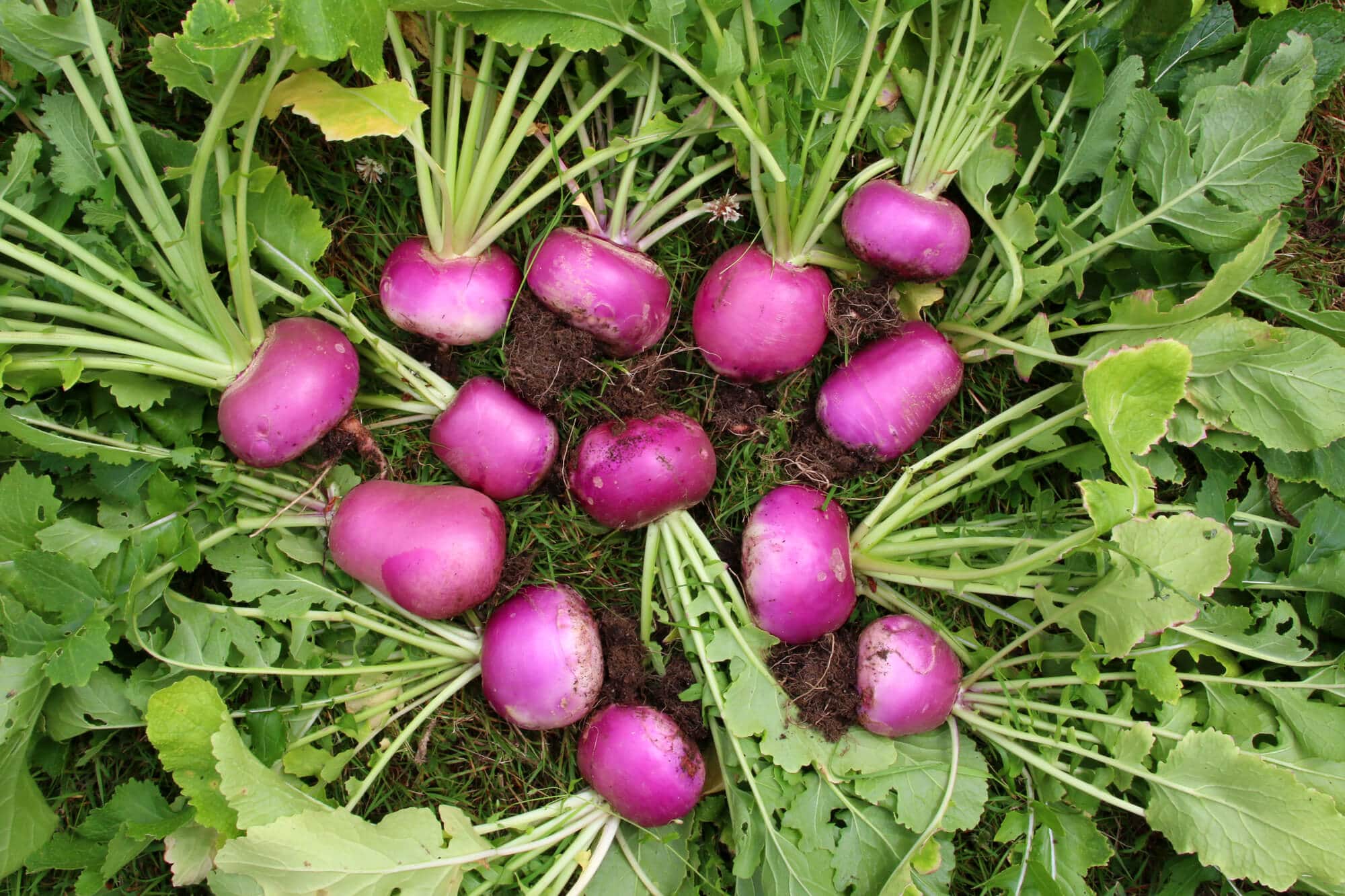
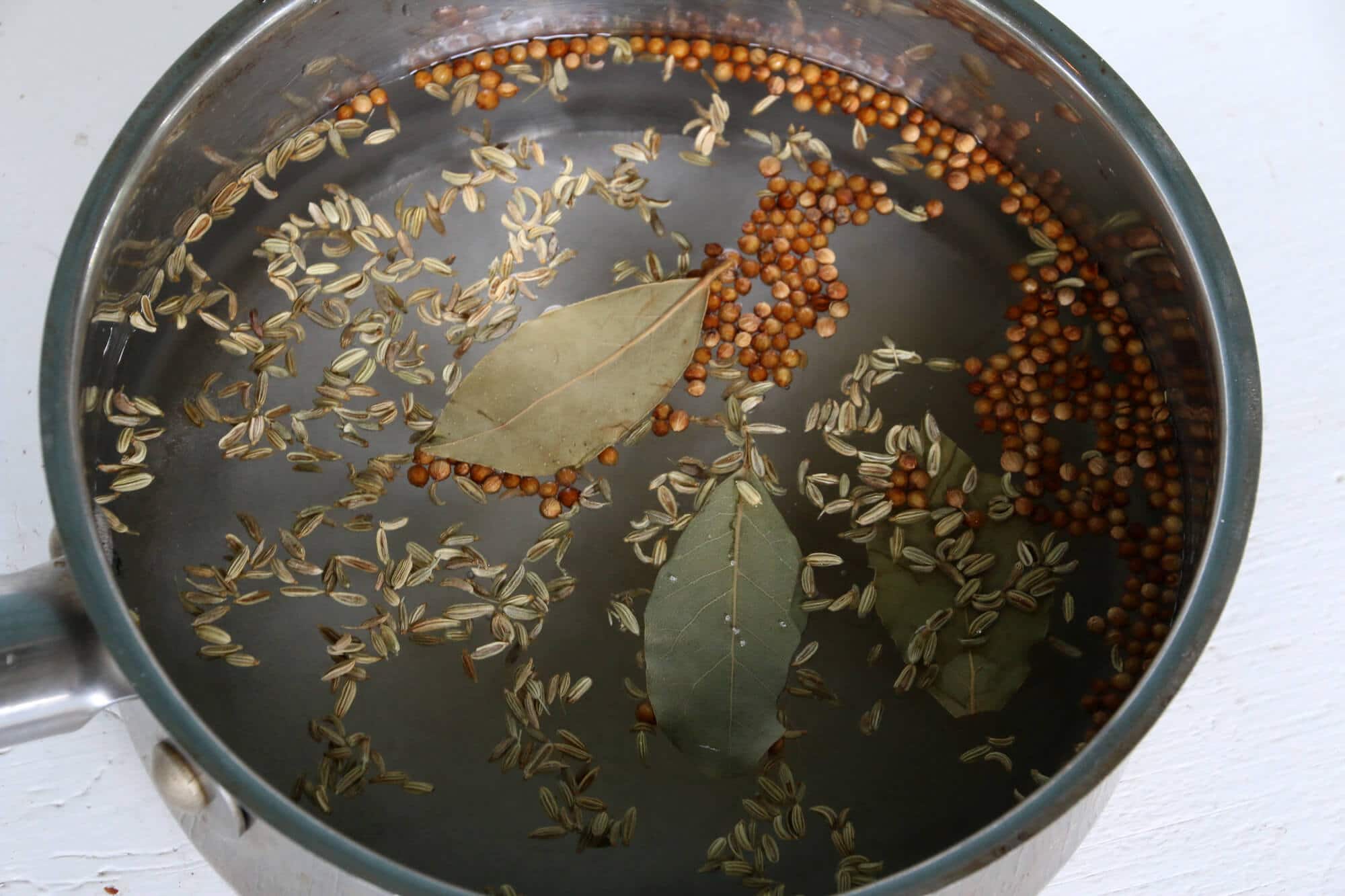
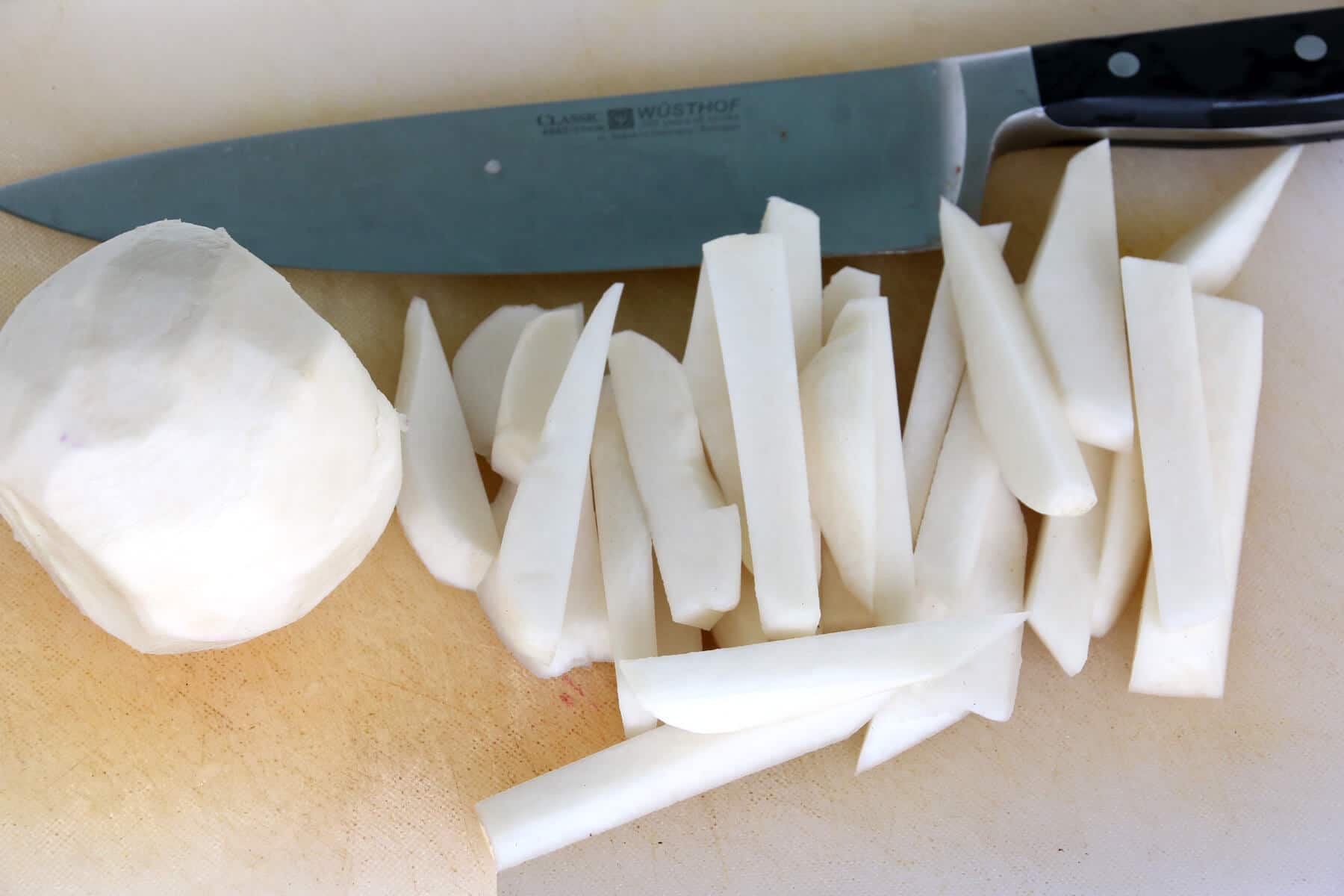
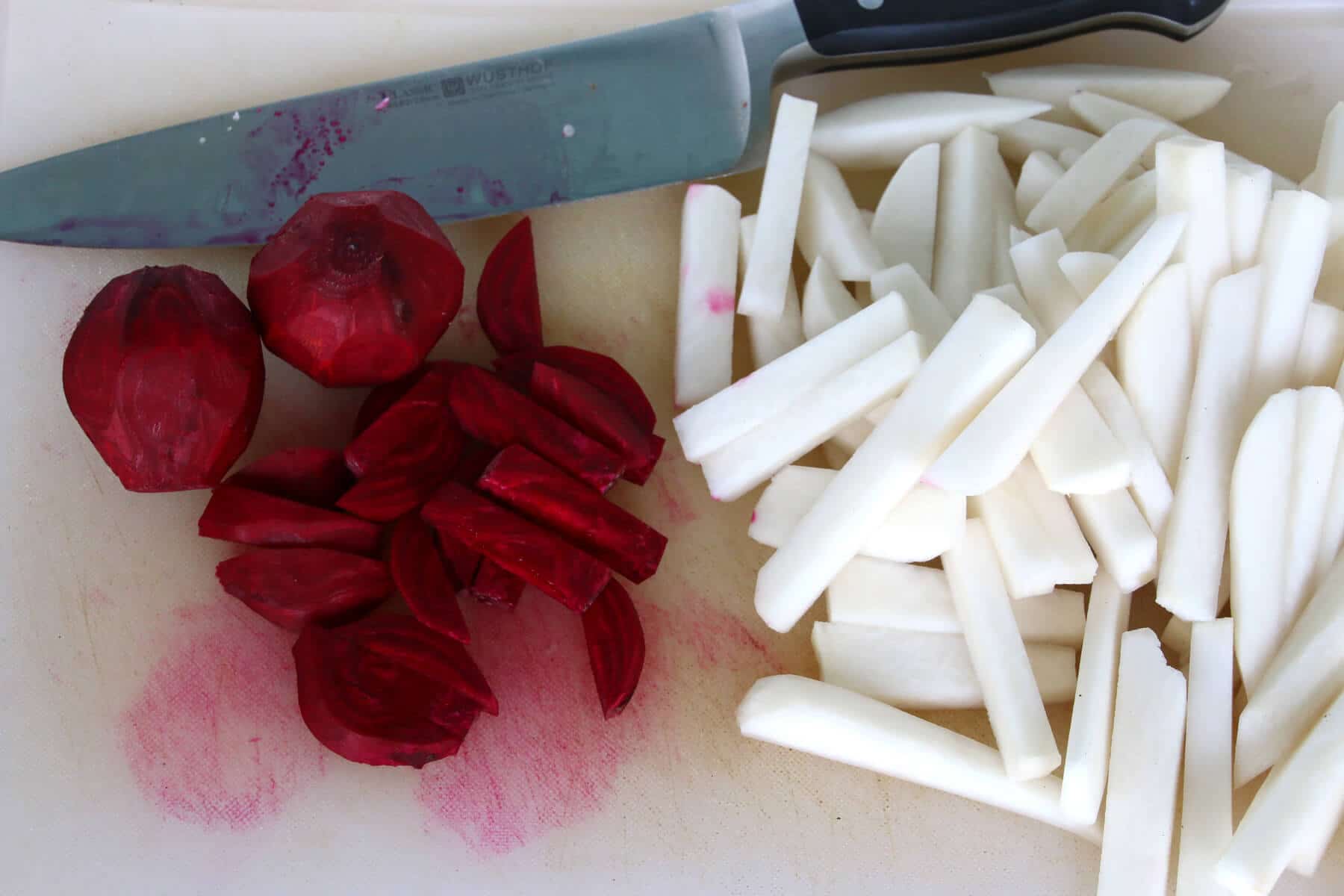
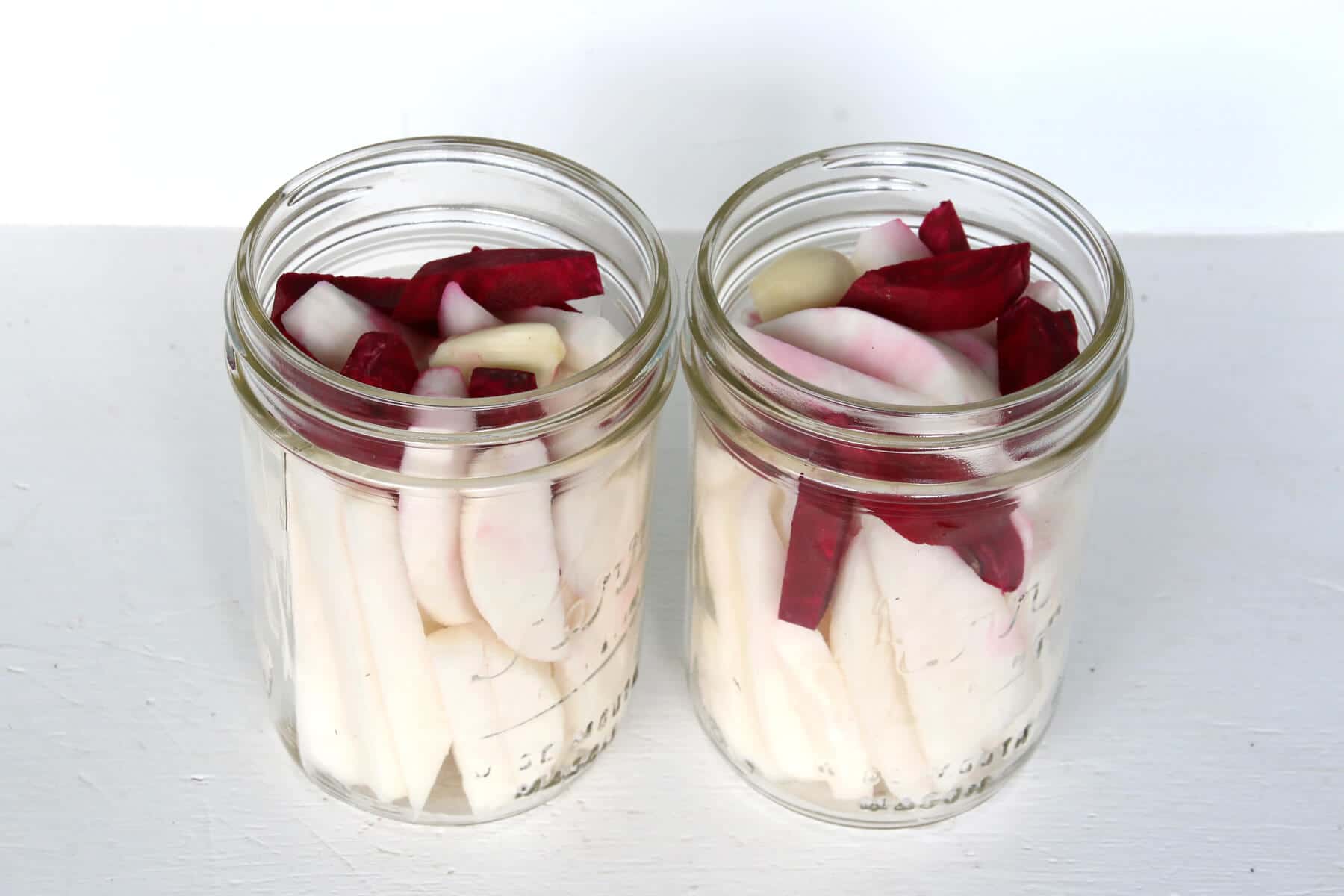
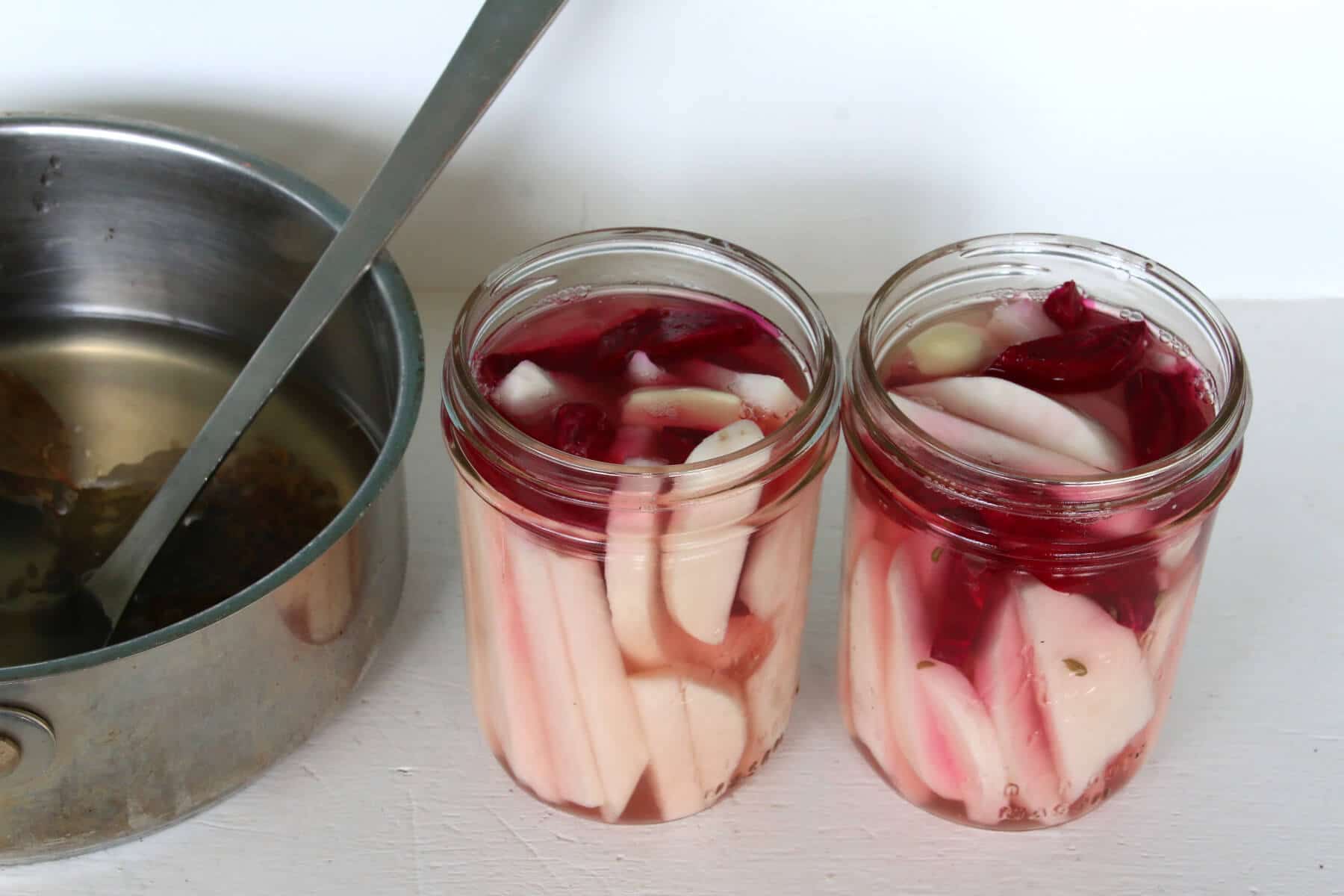
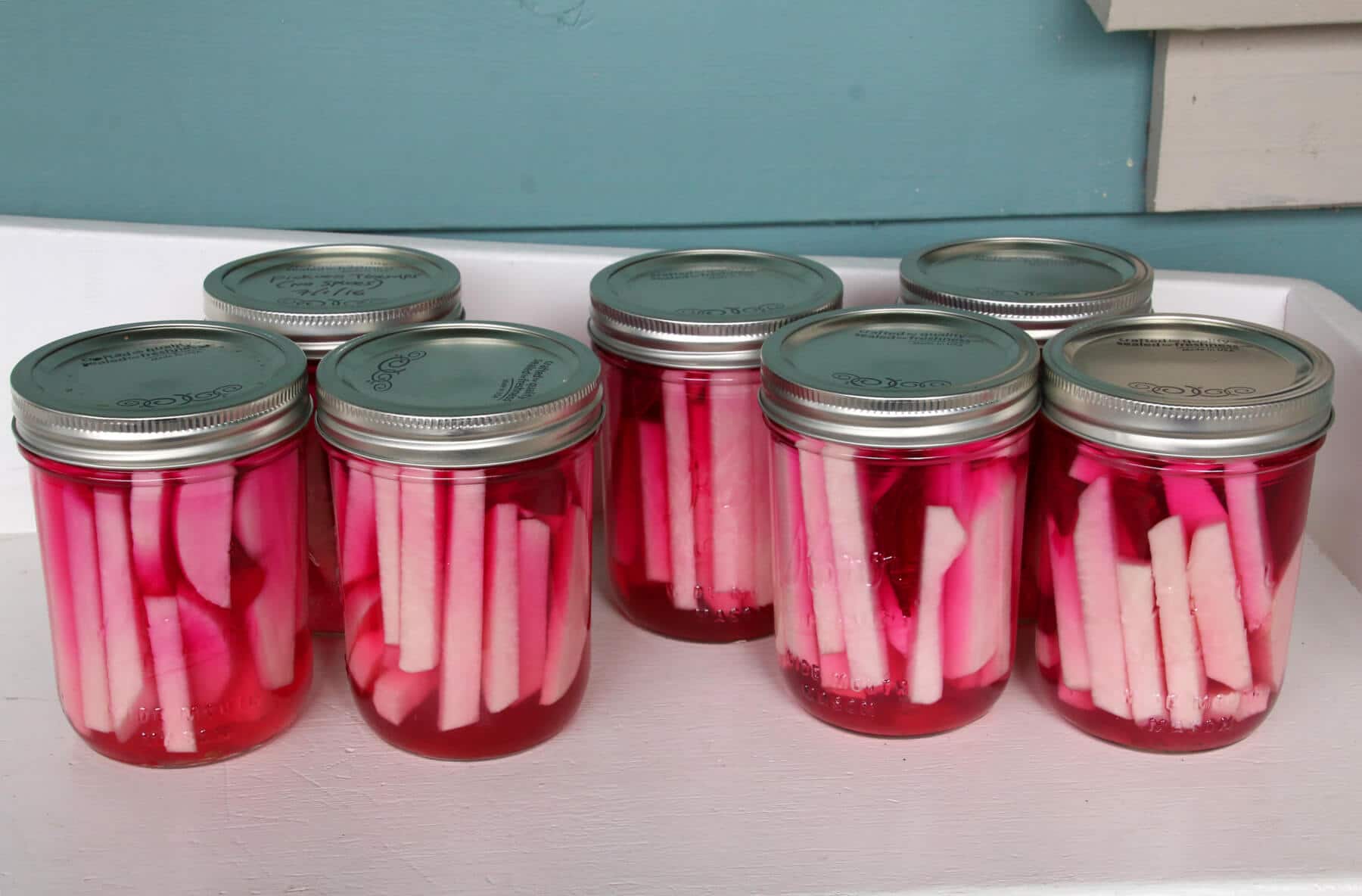



















So, I followed the recipe exactly, but my turnips turned out very bitter. Why would this be, and is there a way to fix it?
Is kosher salt just salt without iodine? I cannot seem to find something called kosher salt in my supermarket here in Britain. Table salt here doesn’t usually have iodine on it anyway, so I’m hoping it’s the same basic thing.
Hi Peter, yes, kosher salt is salt without any additives. You can also use sea salt. If the table salt you have is pure without any additives (including iodine) then you can absolutely use that. You “can” use salt with iodine, it’s perfectly safe, it’s just that the additives tend to discolor the pickled veggies over time, make the aesthetically less pleasant, and can slightly alter the flavor as well.
Can I use canned beets instead of fresh
Hi Sandra, since this calls for a relatively small amount of beets and is in part for aesthetics (the color), I’d say it’s fine to use canned.
Do I need to put the beets in? I do keto and the recipe would be okay other than the beets.
No you don’t have to include the beets.
It says let them sit for a week is that with the lid on or off?
Hi Rtan, that’s with the lids on.
For those of you having trouble sourcing turnip, try growing some next summer. They are very vigourous to the point that I’ve had dropped seeds grow to full size despite being in hardpan. Turnips must be one of the easiest vegetables to grow (especially in short seasons – I live in the tundra and rutabagas just take too long to fully develop).
How about toasting those fennel and coriander seeds a bit before tossing in the brine?
You bet, Steve!
Laurie Smith… That is simply not true regarding the safety of water bath canning pickled vegetables, including turnips. As long as the PH is low enough, any produce can be water bath canned. Please do proper and thorough research before spreading misinformation.
Processing does not cook out the crispness. either. Pressure canning will, pickling will not! You can have crisp pickles that are water bath canned, which is a safer preservation method than fermenting for those that are less experienced at food preservation.
If this particular recipe produces soggy pickles when processed, simply research other pickling methods (such as salting) and using other recipes that may have a higher sugar content (like pickled beets and bread/butter pickles)
I have a hard time finding turnip in my area. Would this recipe work with rutabaga?
It sure will, Steve!
There are no tested safe recipes for processing turnips in a boiling water bath, pickled or otherwise. Processing cooks them and ruins the crispness. Torshi left (which is what this pickle is called) is always refrigerated and eaten quickly, within a few weeks.
Just made a batch and it is way to salty
Make sure you’re using kosher or canning salt, not regular table salt – It’s MUCH stronger! Many people have commented on how salty these are, so I’m wondering if they’re using table salt?
Awesome recipe!! I have a few changes I make.
1) I strain the seeds out before putting the brine in the jars (find the coriander flavour gets too strong)
2) I add whole peppercorns with the turnips in the jar
3) I add 1 extra cup of water which makes them perfectly salty (not too much).
Thank you for the recipe. Oh also pro tip: use small Japanese turnips or homegrown/farmers market small ones. The flavour and crunch is so superior and you don’t need to peel them.
To salty but very good I made them over and used five tablespoons of salt worked good thank you for the recipe
Hello
Q:so do I need to cook turnip and beet before I hot bath?
Recipe didn’t suggest and most beet recipe call for cooking the root veggies
Thanks Kent
Hi Kent, no, in this case you don’t precook them. Just pack them into the jars raw and pour the cooled pickling brine over them.
Wow…making a homemade shawarma dinner tonight, looking forward to the pickled turnips…just had two weeks worth of salt intake, with just a couple of turnip spears…beware!
Hi Blait, unless you’re drinking the actual turnip juice from the jars you won’t be getting anywhere near that amount of salt ;)
Way too salty!! But good flavor!! Wasted some good turnips!
The salt redistributes after a few weeks. Delicious now!
Awesome, Jason! Thanks for checking back in with the update.